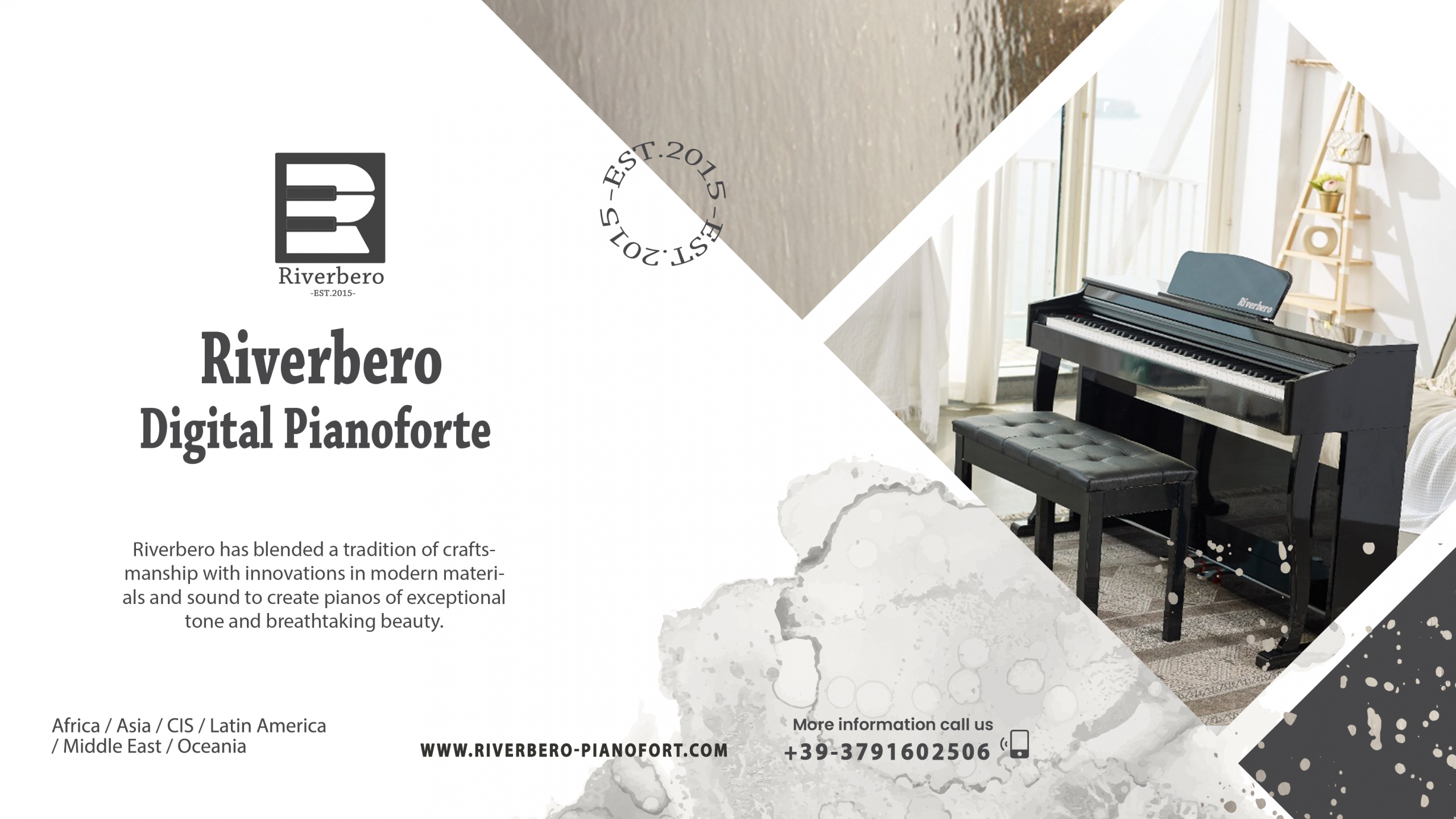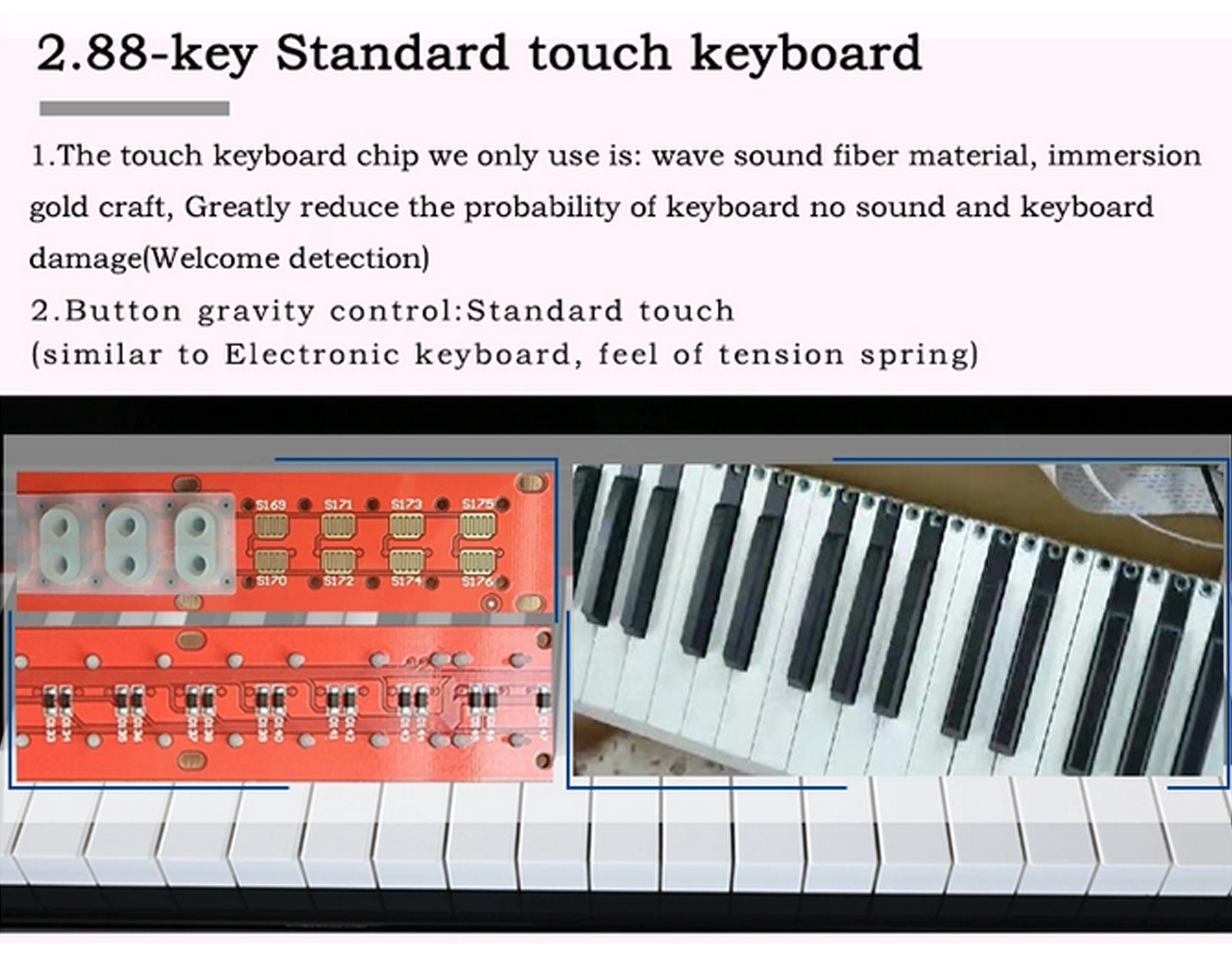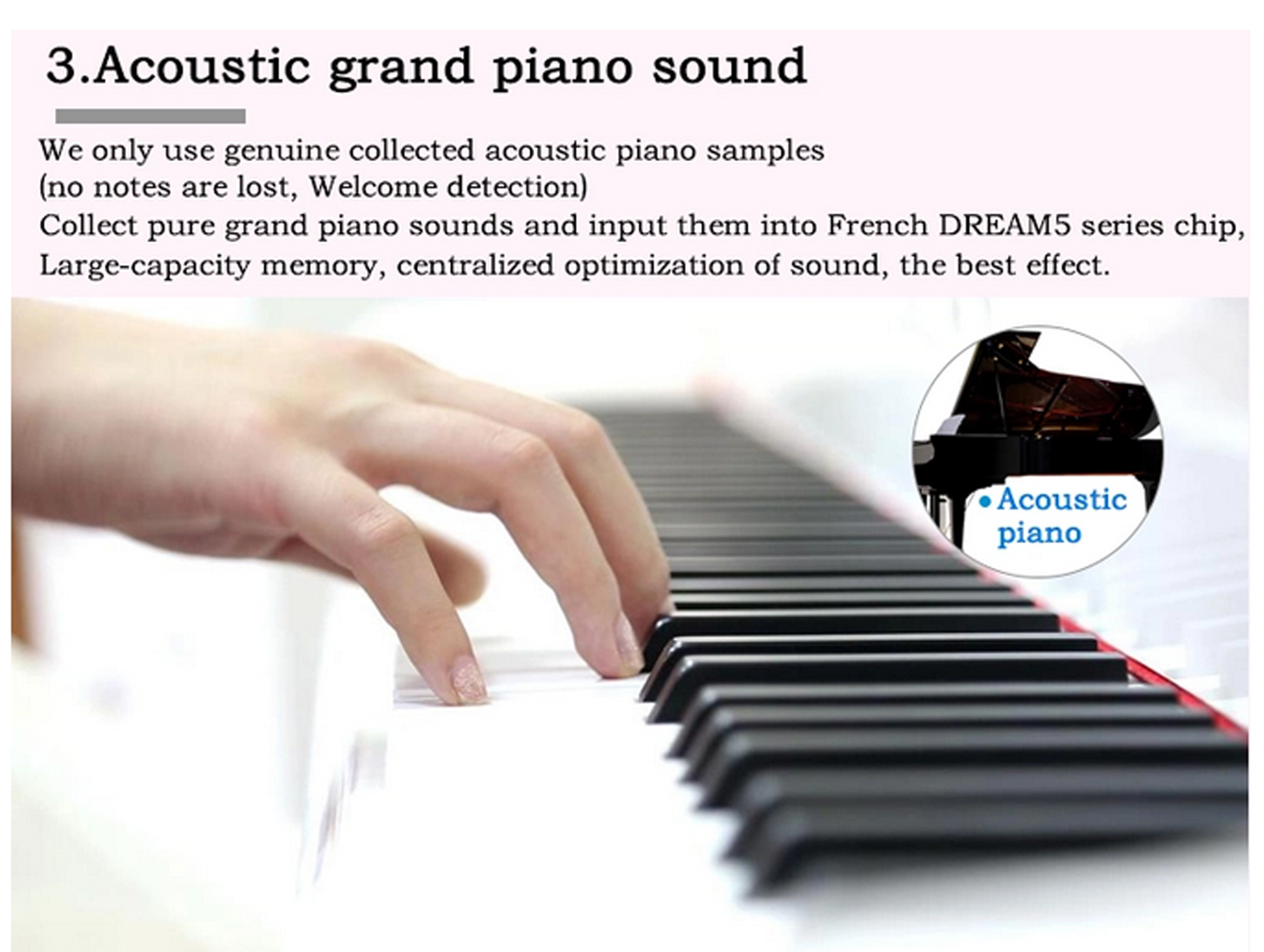Voices
Digital pianos usually have a variety of voices or sounds that can be played, such as piano, organ, strings, and more
Polyphony
Polyphony refers to the number of notes that a digital piano can play at the same time. The higher the polyphony, the more notes can be played simultaneously without any notes dropping out
Connectivity
Some digital pianos have connectivity options, such as USB or MIDI, that allow them to be connected to a computer or other device for recording or music production purposes
Recording
Many digital pianos have a recording function that allows players to record and play back their performances
Metronome
A metronome is a feature that helps players keep a steady tempo while practicing
The sound of a grand piano is produced by the interaction of hammers, strings, and a wooden soundboard. When a key is pressed on a grand piano, a hammer connected to that key is lifted and strikes a string, causing it to vibrate. The vibration of the string is transmitted to the soundboard, which amplifies and resonates the sound, creating the characteristic rich and full-bodied sound of a grand piano.
In digital pianos, the sound of a grand piano is created through the use of digital sampling technology. This involves recording the sound of each individual note on a real grand piano and then using advanced software to recreate those sounds when the corresponding keys are pressed on the digital piano. The samples are often recorded at different dynamic levels, so the sound produced by the digital piano can accurately reflect the nuances of a real grand piano.
In addition to sampling technology, digital pianos may also use advanced modeling algorithms to simulate the physical characteristics of a grand piano’s soundboard, strings, and hammers. This can further enhance the realism of the sound produced by the digital piano, creating a more authentic playing experience for the musician
The 88-key standard keyboard for digital pianos is designed to replicate the full range of a traditional acoustic piano. It consists of 52 white keys and 36 black keys, arranged in repeating groups of 12 keys. The keys are typically made of plastic and have a matte finish to provide a tactile feel similar to that of an acoustic piano.
The standard keyboard layout for digital pianos is based on the traditional piano keyboard, with the lowest note being A0 (27.5 Hz) and the highest note being C8 (4186 Hz). This range covers seven octaves plus a minor third, providing sufficient range to play most classical and contemporary music pieces.
The 88-key standard keyboard for digital pianos also includes a range of features and functions, such as touch sensitivity, which enables the piano to respond to different levels of pressure applied to the keys, and weighted keys, which simulate the feel of an acoustic piano by providing resistance and responsiveness similar to that of a traditional piano.
Other features commonly found on digital pianos include the ability to change the sound of the piano to replicate other instruments or even to create entirely new sounds, as well as the ability to record and playback performances, and connect to other devices such as computers or external sound systems.
The sound of an acoustic grand piano is rich, full-bodied, and complex, with a wide range of tonal colors and dynamics. The sound is created by the interaction of hammers, strings, and a wooden soundboard.
When a key is pressed on an acoustic grand piano, a mechanism called the action is set in motion. The action lifts a hammer, which strikes a string, causing it to vibrate. The vibration of the string is transmitted to the soundboard, which amplifies and resonates the sound, creating the characteristic rich and full-bodied sound of a grand piano.
The sound of an acoustic grand piano is influenced by a number of factors, including the size and shape of the soundboard, the materials used in the construction of the piano, and the tension and composition of the strings. These factors combine to create a unique tonal character that can vary from one piano to another.
Acoustic grand pianos are capable of producing a wide range of dynamics, from soft and delicate to loud and powerful. The sound can be shaped and nuanced by the player, allowing for a high degree of expressive potential.
Overall, the sound of an acoustic grand piano is widely regarded as the gold standard for piano sound, and is cherished by musicians and music lovers around the world for its beauty, expressiveness, and depth.






